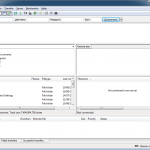Website Hosting
There are so many options available for you to get your website online that many people dont know where to start. I will run through a few (non-exhaustive) options for you, from limited and free to powerful (and expensive).
You can run a website from your home PC via your home internet connection. I wouldn’t do it though but it can be done and in the early years of the internet, many sites were run in exactly this way via dial up modems. I am not going to detail how as it is now so cheap and easy to organise proper web hosting that it makes no sense, for anyone.
Before you begin, you need to have your Domain Name registered and ready to use.
When you have your Domain Name ready to go, you should have a bit of a think about how you intend to use your web site. Do you imagine the web site scaling to handle very high numbers of users? Do you have a preferred platform (Windows or Linux are the two big options) or preferred programming language and database system that you want to use? Basically Linux hosting will always be cheaper than Windows but cannot be used for Dot.NET applications or SQL Server databases. It can be used for PHP programming and MySQL databases though which are very widely used online. Windows can also support PHP and MySQL but in my experience, shared hosting of PHP and MySQL on Windows hosts seems slower than on Linux, possibly due to licencing costs meaning more sites are hosted on each Windows server.
To begin with, you can host your website with pretty much anyone you like. Make sure they have an online reputation (www.hostsearch.com is a good place to start) and can support what you need (if you want to use a free Web Content Management System like Joomla, Drupal, WordPress, MediaWiki etc, it must support PHP and MySQL). This site costs around $6AUD/m to host on Linux servers with unlimited space and bandwidth (I havent fully explored the concept of ‘unlimited’ though) but I would probably be asked to leave or have my site restricted in some way if it became so popular that it affected the performance of the other sites hosted on the same server. Some hosts are ‘free’ but make their money with ads etc, others are quite expensive and offer Service Level Agreements (SLA’s) regarding server up time. I have found Australian hosting to be considerably more expensive than hosting offshore and the performance impact of being located in the US vs Australia is negligible. Once you have signed up, delegate your domain name to them (or point it to them if you host it elsewhere), upload your website to them and it will just go live on the internet.
If you have some specific hosting needs, the next step up is a dedicated hosted server, probably a Virtual Server in a data centre. A Virtual server is completely self contained but many of them share the same physical server (as average utilisation is always a small fraction of peak performance, this is a much better use of a physical server). You can treat this like your own server, you will be given full access to it as if it was your own (but if you stuff it up, you have to fix it too). A dedicated server can usually handle a larger volume of traffic and users than a shared server as well.
A dedicated physical server is your next step up, you can lease one from a hosting company or install your own into a data centre. The prices start to rise with this option with data centre space being expensive and increasingly scarce (In Melbourne anyway).
Above this is the redundant server farm with load balancing. The sky is the limit once you get here in terms of how much you could potentially spend. Google has spent billions of dollars on their infrastructure but any level of load balancing and fault tolerance does not come cheap. This level of hosting is out of my league and more often than not would just be overkill for most business web sites.
Regardless of who you host with, make sure you keep regular back ups of your website. If your hosting company goes under, you may need to get up and running with another host on very short notice and may not get a chance to pull down a copy of your website before it gets turned off.


